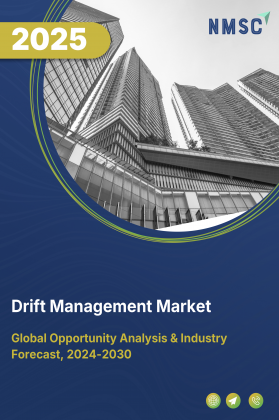
South Korea Delta Robots Market by Axis Type (Double Axis, Three Axis, Four Axis, Five Axis, and Six Axis), by Payload Capacity (Up to 3 Kilogram, 3.1 to 8 Kilogram, 8.1 to 15 Kilogram, and More than 15 Kilogram), by Version Environment (Standard and Hygiene), by Application (Assembly, Pick & Place, Material Handling, Palletizing/Packaging, and Others) and Others– Opportunity Analysis and Industry Forecast, 2023–2030
Industry: ICT & Media | Publish Date: 15-Feb-2025 | No of Pages: 76 | No. of Tables: 59 | No. of Figures: 28 | Format: PDF | Report Code : IC906
Market Definition
South Korea Delta Robots Market was valued at USD 130.89 million in 2022, and is predicted to reach USD 340.72 million by 2030, with a CAGR of 11.77% from 2023 to 2030. Delta or parallel robots are highly specialized robotic systems characterized by their unique mechanical structure and exceptional precision. These robots have three or more arms connected to a common base, forming a parallel mechanism that gives exceptional precision and structural stability.
Delta robots are renowned for their remarkable speed, agility, and accuracy, making them ideal for a wide range of high-speed, precision applications in manufacturing, electronics, food & beverage, pharmaceuticals, and others. The design of delta robots allows them to move with incredible precision in all three dimensions, such as assembly lines, pick-and-place operations, and intricate manufacturing processes, making them particularly well-suited for tasks involving pick and place, assembly, packaging, and material handling.
Their parallel kinematic structure, a robotic system design where multiple limbs work parallel to control end-effector motion, enabling precise coordination and control, provides superior rigidity and stability, ensuring consistent and reliable performance. Depending on their specific configuration, they can handle various payloads, ranging from lightweight items to heavier components.
Thus, delta robots are a class of robotic systems renowned for their speed, precision, and versatility. Their unique parallel structure, including rigidity, speed, and stability, makes them a preferred choice for various high-speed automation tasks across multiple industries, contributing to increased efficiency and precision in modern manufacturing and assembly processes.
Robotic Adoption Revolutionizing Manufacturing Efficiency
The rising adoption of robots in the manufacturing industry to streamline processes, reduce labor costs, improve quality control, and enhance overall production efficiency drives the market's growth. As per the International Federation of Robotics, in 2021, South Korea boasted a ratio of 1,000 industrial robots per 10,000 employees, surpassing China's count by over threefold and securing its position as the global leader.
This achievement can be attributed to South Korea's renowned electronics industry and distinctive automotive sector, which serve as substantial customer bases for industrial robots and contribute significantly to the country's economic prosperity. Thus, this factor increases the demand for delta robots in the electronic and automotive industries, boosting market growth.
Cosmetic Industry Embraces Delta Robots for Enhanced Automation
The growing cosmetic industry in the nation requires delta robots for various automation and manufacturing processes. These robots are increasingly employed to enhance efficiency, precision, and speed in packaging, quality control, and assembly in cosmetics manufacturing. According to the International Trade Administration, South Korea is one of the top 10 beauty markets in the world, known for innovation, gentle ingredients, and pleasing packaging. Thus, it is expected to drive the growth of the market.
The High Cost of Delta Robots Hinders Market Growth in Asia-Pacific
The market for delta robots faces a significant impediment in the form of their high costs. These robots, renowned for their precision and efficiency, often carry a substantial price tag, which can pose a barrier to adoption for numerous businesses, especially those classified as small and medium-sized enterprises (SMEs).
Furthermore, the prolonged return on investment (ROI) period, resulting from these elevated upfront expenses, can discourage companies that seek more immediate cost reductions and efficiency enhancements. This scenario not only hampers market expansion but also contributes to market concentration, with only larger corporations having the financial capacity to both afford and capitalize on this advanced automation technology.
Integration of Advanced Technologies to Enhance Precision Represents a Significant Opportunity for the Market
Integrating advanced technologies, such as computer vision and artificial intelligence (AI), to enhance precision represents a significant opportunity for the delta robot market. These cutting-edge technologies enable delta robots to operate more accurately and efficiently, opening up new avenues for applications across various industries.
The integration of computer vision and AI not only enhances precision but also improves overall productivity and reduces errors in manufacturing processes. This can result in cost savings, higher product quality, and increased competitiveness for businesses that leverage delta robots with these advanced technologies. As industries continue to embrace automation and demand higher precision and flexibility, the delta robot market is poised to benefit significantly from the opportunities created by integrating computer vision and AI.
Competitive Landscape
The South Korea delta robots industry includes several market players such as ABB Ltd., Fanuc Corporation, Kawasaki Heavy Industries Ltd, Yaskawa Electric Corporation, FESTO, Weiss GmbH, Omron Corporation, IGUS GmbH, Cama Group, and KUKA AG.
Key Benefits
-
The South Korea delta robots market report provides a quantitative analysis of the current market and estimations through 2023-2030 that assists in identifying the prevailing market opportunities to capitalize on.
-
The study comprises a deep dive analysis of the market trend including the current and future trends for depicting the prevalent investment pockets in the market.
-
The information related to key drivers, restraints, and opportunities and their impact on the market is provided in the report.
-
The competitive analysis of the market players along with their market share in the South Korea delta robots market.
-
The SWOT analysis and Porter’s Five Forces model are elaborated in the study.
-
Value chain analysis in the market study provides a clear picture of the stakeholders’ roles.
South Korea Delta Robots Market Key Segments
By Axis Type
-
Double Axis
-
Three Axis
-
Four Axis
-
Five Axis
-
Six Axis
By Payload Capacity
-
Upto 3 Kilogram
-
3.1 to 8 Kilogram
-
8.1 to 15 Kilogram
-
More than 15 Kilogram
By Version Environment
-
Standard
-
Hygiene
By Application
-
Assembly
-
Pick & Place
-
Material Handling
-
Palletizing/ Packaging
-
Primary
-
Secondary
-
-
Others
By Industry Vertical
-
Electronics
-
Cosmetics
-
Food & Beverages
-
Pharmaceuticals
-
Others
Report Scope and Segmentation:
|
Parameters |
Details |
|
Market Size in 2022 |
USD 130.89 Million |
|
Market Volume in 2022 |
7455 Units |
|
Revenue Forecast in 2030 |
USD 340.72 Million |
|
Growth Rate |
CAGR of 11.77% from 2023 to 2030 |
|
Analysis Period |
2022–2030 |
|
Base Year Considered |
2022 |
|
Forecast Period |
2023–2030 |
|
Market Size Estimation |
Million (USD) |
|
Growth Factors |
Rising adoption of robots in the manufacturing industry. Growing cosmetic industry. |
|
Companies Profiled |
10 |
|
Market Share |
Available for 10 companies |
|
Customization Scope |
Free customization (equivalent up to 80 working hours of analysts) after purchase. Addition or alteration to country, regional, and segment scope. |
|
Pricing and Purchase Options |
Avail customized purchase options to meet your exact research needs. |
Key Players
-
ABB Ltd.
-
Fanuc Corporation
-
Kawasaki Heavy Industries Ltd.
-
Yaskawa Electric Corporation
-
FESTO
-
Weiss GmbH
-
Omron Corporation
-
IGUS GmbH
-
Cama Group
-
KUKA AG




















 Speak to Our Analyst
Speak to Our Analyst

























